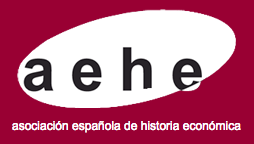¿Por qué se estancó la cabaña trashumante castellana en la segunda mitad del siglo XVIII? Una interpretación
DOI:
https://doi.org/10.1016/S1698-6989(05)70284-8Palabras clave:
ganadería, trashumancia, pastos, Mesta, N53, Q15Resumen
En este trabajo se examinan las fuentes disponibles para estudiar la evolución cuantitativa de la cabaña trashumante castellana durante el siglo XVIII. De ellas se deduce que el número de cabezas creció durante la primera mitad de la centuria para, luego, entrar en una fase estacionaria, probablemente, hasta la guerra de Independencia. Tras constatar que dicho estancamiento coincide con una fase de crecimiento de las exportaciones laneras y de buenos resultados de las explotaciones trashumantes, se propone como principal factor explicativo del mismo la escasez de pastos. En relación con esta hipótesis se analizan la conflictividad por el acceso a los pastizales, los mecanismos a través de los cuales fueron redistribuidos y las formas en que todo ello contribuyó a la gestación de la crisis de la Mesta y de la trashumancia castellana.
Descargas
Descargas
Cómo citar
Número
Sección
Licencia
Aquellos autores/as que tengan publicaciones con esta revista, aceptan los términos siguientes
- Los autores/as conservarán sus derechos de autor y garantizarán a la revista el derecho de primera publicación de su obra, el cuál estará simultáneamente sujeto a la Licencia de reconocimiento de Creative Commons Reconocimiento-No comercial-Sin obra derivada 4.0 Internacional que permite a terceros compartir la obra siempre que se indique su autor y su primera publicación esta revista, y no permite hacer uso comercial de la misma ni tampoco obras derivadas.
- Los autores/as podrán adoptar otros acuerdos de licencia no exclusiva de distribución de la versión de la obra publicada (p. ej.: depositarla en un archivo telemático institucional o publicarla en un volumen monográfico) siempre que se indique la publicación inicial en esta revista.
Plagio y fraude científico
La publicación de un trabajo que atente contra los derechos de propiedad intelectual será responsabilidad de los autores/as, que serán los que asuman los conflictos que pudieran tener lugar por razones de derechos de autor. Los conflictos más importantes pueden darse por la comisión de plagios y fraudes científicos.
Se entiende por plagio:
- Presentar el trabajo ajeno como propio.
- Adoptar palabras o ideas de otros autores sin el debido reconocimiento.
- No emplear las comillas u otro formato distintivo en una cita literal.
- Dar información incorrecta sobre la verdadera fuente de una cita.
- El parafraseo de una fuente sin mencionar la fuente.
- El parafraseo abusivo, incluso si se menciona la fuente.
Las prácticas constitutivas de fraude científico son las siguientes:
- Fabricación, falsificación u omisión de datos y plagio.
- Publicación duplicada.
- Conflictos de autoría.





